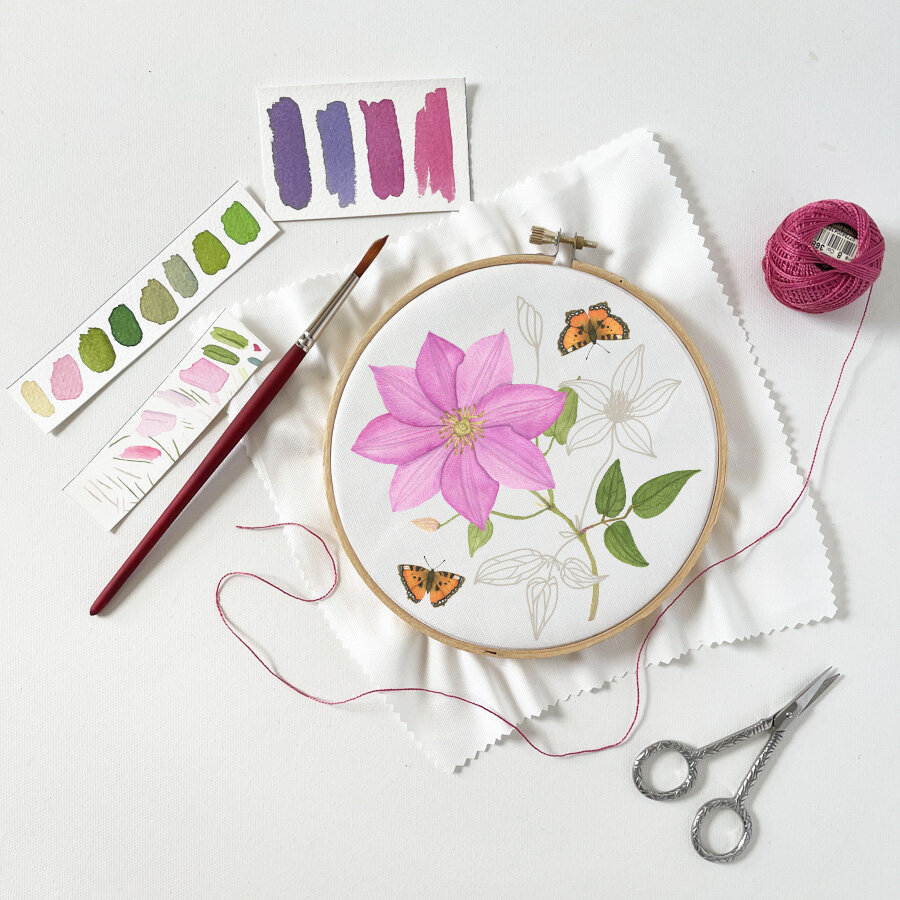Create Your Own Embroidery Patterns
Embroidery is a timeless craft that allows you to express your creativity through beautiful patterns and designs. While there are countless patterns available, creating your own embroidery patterns adds a personal touch to your projects and enables you to showcase your unique style. In this guide, we will explore the steps to create your own embroidery patterns, the tools you’ll need, and tips for success.
1. Understanding Embroidery Patterns
What Are Embroidery Patterns?
Embroidery patterns are designs that you stitch onto fabric using various techniques and stitches. These patterns can range from simple shapes and motifs to intricate designs. Creating your own patterns allows you to customize your projects and make them truly one-of-a-kind.
Why Create Your Own Patterns?
Creating your own embroidery patterns has several advantages:
Personalization: You can tailor designs to suit your taste, preferences, or specific projects.
Creativity: Designing your own patterns encourages creative thinking and experimentation.
Skill Development: It helps improve your embroidery skills as you learn to translate ideas into stitchable designs.
2. Tools and Materials Needed
Essential Tools
Before you begin creating your embroidery patterns, gather the following tools:
Sketchbook: For drawing and brainstorming your designs.
Pencil and Eraser: For sketching and making adjustments.
Embroidery Hoop: To keep your fabric taut while stitching.
Needles: Choose appropriate embroidery needles for your fabric type.
Fabric: Select a base fabric such as cotton, linen, or felt.
Additional Materials
You may also need:
Embroidery Floss or Thread: Choose colors that align with your design vision.
Scissors: For trimming threads and fabric.
Transfer Materials: Such as fabric markers or iron-on transfers, for transferring your design to the fabric.
3. Steps to Create Your Own Embroidery Patterns
Step 1: Brainstorm Your Design
Start by brainstorming ideas for your embroidery pattern. Consider the themes or motifs that inspire you, such as nature, geometric shapes, or personal symbols. Create a list of elements you want to include in your design.
Step 2: Sketch Your Pattern
Using your sketchbook, start drawing your design. Keep the following tips in mind:
Simplicity: Start with simple shapes, especially if you’re a beginner. Complex designs can be broken down into simpler elements.
Scale: Consider the size of your final piece and the area you will be stitching. Make sure your design fits well within that space.
Revisions: Don’t be afraid to make changes. Use an eraser to adjust your sketches until you’re satisfied with the overall look.

Step 3: Choose Your Stitches
Decide which embroidery stitches will best showcase your design. Some common stitches to consider include:
Backstitch: Great for outlines and simple shapes.
Satin Stitch: Perfect for filling in shapes with solid colors.
French Knot: Adds texture and dimension to your design.
Chain Stitch: Useful for decorative lines and borders.
Step 4: Transfer Your Design
Once you’re happy with your design, it’s time to transfer it onto your fabric. There are several methods to do this:
Tracing: Use a lightbox to trace your design directly onto the fabric.
Iron-On Transfer: Print your design onto transfer paper and then iron it onto your fabric.
Freehand Drawing: If you’re confident, you can draw directly onto the fabric using a fabric-safe marker.
4. Stitching Your Pattern
Preparing Your Fabric
Before you start stitching, prepare your fabric by:
Washing: Pre-wash your fabric to remove any sizing or chemicals.
Ironing: Iron the fabric to eliminate wrinkles and create a smooth surface for stitching.
Securing in a Hoop: Place your fabric in an embroidery hoop to keep it taut while you work.
Starting to Stitch
Now, you can begin stitching your design! Follow these tips for a successful stitching process:
Work in Sections: Start with one area of the design and complete it before moving on to the next.
Use Consistent Tension: Ensure that your stitches are consistent in tension to create a neat and polished look.
Regularly Check Your Design: Step back occasionally to see how your pattern is coming together and make adjustments if needed.
5. Tips for Success in Creating Embroidery Patterns
1. Practice Regularly
As with any skill, practice is essential for mastering embroidery. Try creating multiple patterns to improve your skills and find your unique style.
2. Seek Inspiration
**
Look for inspiration in various places, including nature, art, and other embroidery projects. Pinterest and Instagram are excellent platforms to explore new ideas and trends.
3. Join an Embroidery Community
**
Connecting with fellow embroiderers can provide support, motivation, and feedback on your designs. Consider joining local embroidery groups or online communities to share your work and gain insights.
4. Embrace Mistakes
Don’t be discouraged by mistakes; they are part of the learning process. Instead, view them as opportunities to experiment and refine your techniques.
6. Final Touches and Displaying Your Work
Finishing Your Embroidery
Once you’ve completed your stitching, take the time to finish your embroidery properly. Here are some steps to consider:
Secure Threads: Tie off your threads neatly on the back of the fabric to prevent unraveling.
Trim Excess Fabric: Cut away any excess fabric outside the embroidery hoop if desired.
Displaying Your Embroidery
Showcasing your work can be done in several creative ways:
Framing: Frame your completed embroidery piece to hang on the wall.
Pillows and Bags: Incorporate your patterns into functional items like pillows, bags, or clothing.
Gifts: Consider giving your embroidered pieces as thoughtful gifts to friends and family.
Conclusion
Creating your own embroidery patterns is a rewarding and fulfilling experience that allows you to express your individuality and creativity. By following the steps outlined in this guide, you can design unique patterns that reflect your style and skills. Remember to practice regularly, seek inspiration, and connect with others in the embroidery community. With patience and creativity, y
